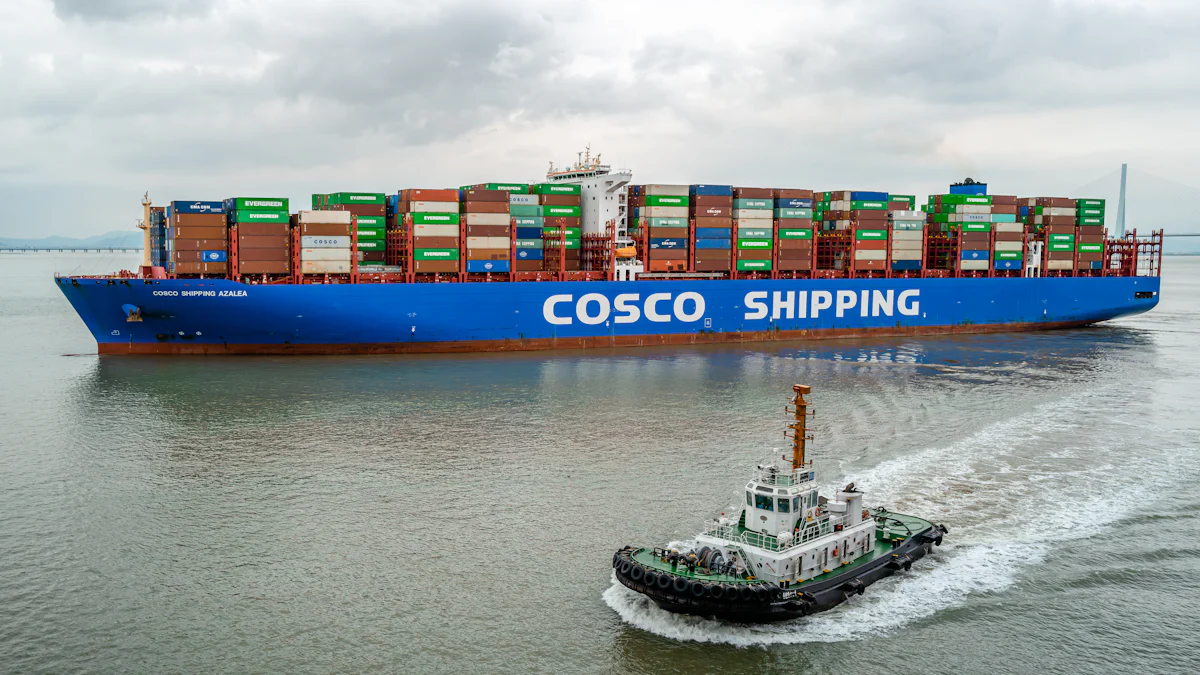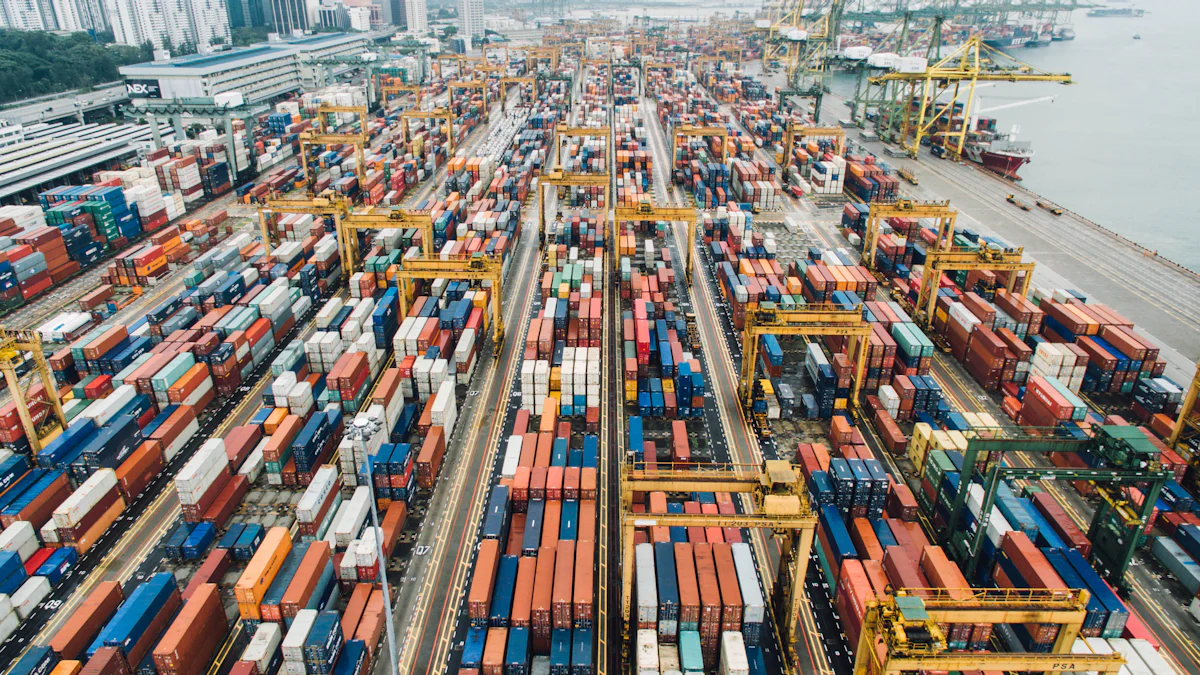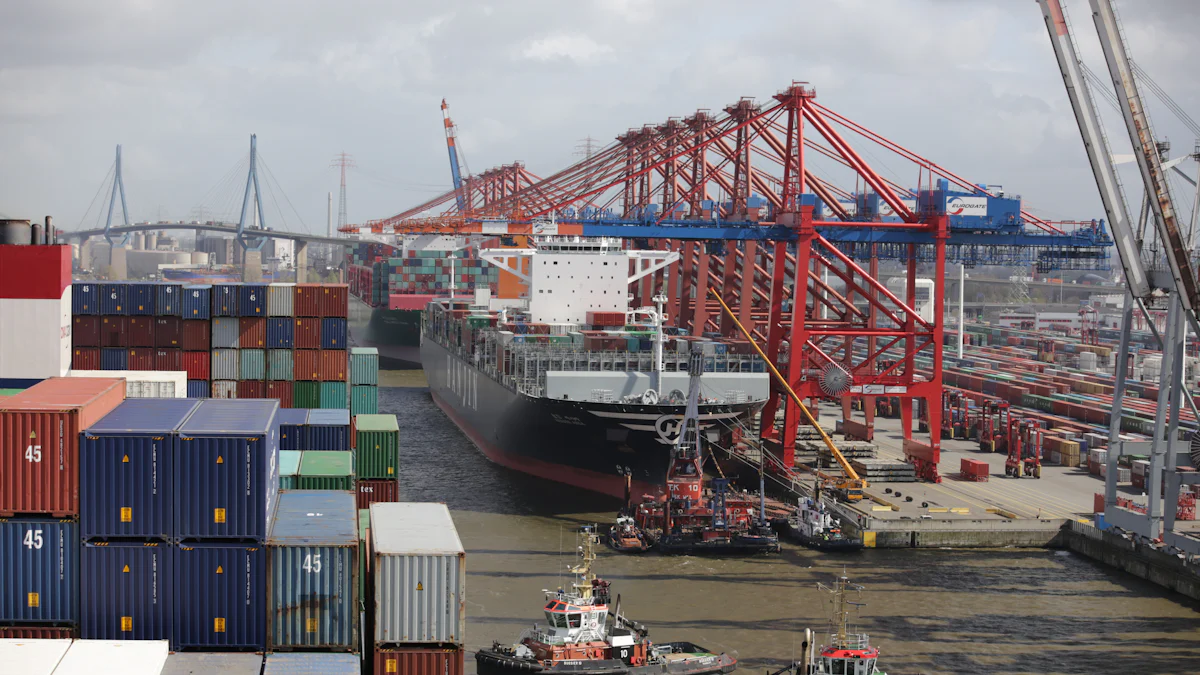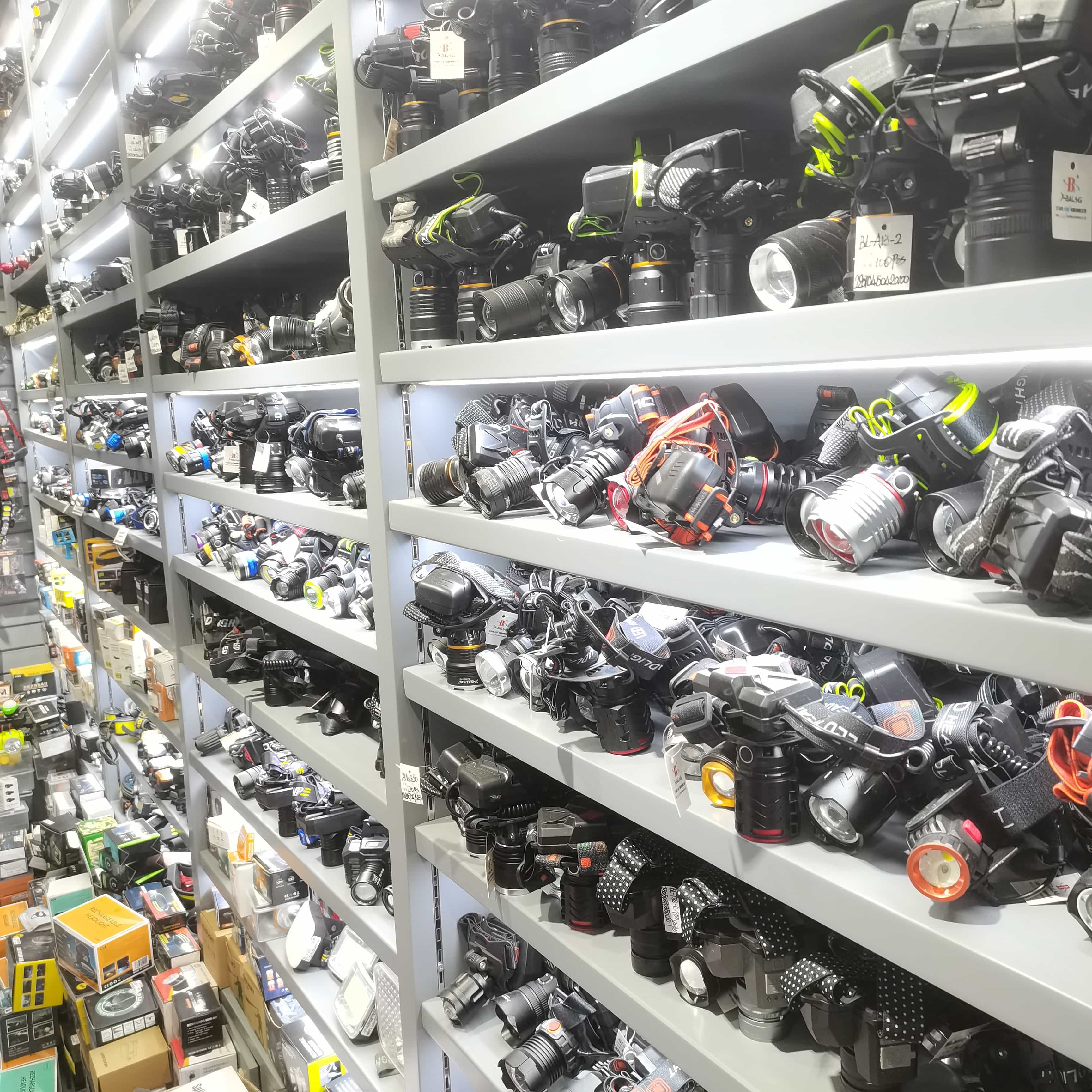Key Insights for Sourcing and Factory Visits in China

Sourcing from China plays a vital role in global supply chains, offering businesses access to cost-effective manufacturing and diverse product options. However, the china sourcing process requires careful planning to ensure success. Factory visits provide you with a unique opportunity to observe production processes, verify supplier claims, and build trust. These visits also help reduce risks like quality issues or delays. Despite challenges such as language barriers, they remain essential for ensuring product quality and supplier reliability. By understanding these steps, you can navigate the china sourcing process effectively and achieve long-term success.
Key Takeaways
Building good relationships, or guanxi, with suppliers is key. Trust and working together make deals better.
Knowing Chinese customs, like respecting leaders and saving face, avoids problems. It also helps teamwork.
Research suppliers well to make sure they are reliable. Check their papers, ask for references, and start with small orders.
Use a strong quality check system. Do checks before production and visit factories to keep products good.
Talk clearly and often with suppliers. This builds strong partnerships and solves problems fast for smooth work.
Understanding the Cultural and Business Context
The Role of Guanxi in China Sourcing
Guanxi, which translates to "relationships" or "connections," plays a significant role in sourcing from China. It emphasizes trust and mutual benefit in business relationships. Building guanxi with suppliers can lead to smoother negotiations and better collaboration. In some regions, traditional practices make guanxi even more critical. Personal relationships often deepen trust, as people tend to assist those they know well. However, over-reliance on guanxi can create challenges, such as reciprocal obligations or ethical concerns. To succeed, you should balance professional practices with relationship-building efforts. Understanding guanxi helps you navigate the complexities of sourcing in China effectively.
Key Cultural Norms for Successful Business Interactions
Adapting to Chinese cultural norms is essential for successful business interactions. Respect for hierarchy and authority is a cornerstone of Chinese business culture. Building strong relationships, or guanxi, remains vital. Additionally, face-saving and conflict avoidance are common practices. Patience and a long-term perspective often lead to better outcomes.
Cultural Norms |
|---|
Respect for hierarchy and authority. |
Building and maintaining strong relationships (Guanxi). |
Face-saving and conflict avoidance. |
Gift-giving and reciprocity. |
Patience and a long-term perspective. |
Understanding these norms helps you avoid misunderstandings and build trust. For example, punctuality and indirect communication are highly valued. Even small gestures, like gift-giving, can strengthen relationships. By respecting these practices, you can foster collaboration and improve your sourcing outcomes.
Overcoming Communication Challenges
Communication challenges often arise when sourcing from China. Language barriers are common, especially in regions where English is less prevalent. Learning basic Mandarin or hiring bilingual staff can bridge this gap. Chinese negotiation styles may differ from what you are used to. For instance, silence is sometimes used as a tactic during discussions. Recognizing these differences allows you to adapt and respond effectively.
Compliance with regulations also requires clear communication. China's regulatory environment can be complex, so consulting legal experts ensures you meet all requirements. By addressing these challenges proactively, you can build stronger relationships with suppliers and avoid potential misunderstandings.
Conducting Supplier Research and Verification
Finding Reliable Suppliers for Sourcing from China
Finding reliable suppliers is crucial for successful sourcing. You can start by checking if suppliers comply with industry standards and certifications. Look for customer feedback on e-commerce platforms to gauge their reputation. Request references and analyze past order history to assess their reliability.
To minimize risks, evaluate export records to determine their experience in handling similar products. Request product samples to verify quality and consistency. Starting with a small order allows you to test their reliability before committing to larger volumes. Using a third-party inspection service can also help ensure product quality. Negotiating secure payment terms further protects your business from financial risks.
Reliable suppliers often have a history of timely deliveries and financial stability. Conducting due diligence ensures you partner with trustworthy suppliers, reducing potential challenges in your sourcing journey.
Verifying Supplier Legitimacy and Credentials
Supplier verification is essential to avoid risks like fake suppliers or poor-quality products. Begin by checking their business registration through the State Administration for Market Regulation (SAMR) website. Request business licenses and certifications, such as ISO standards, to confirm their legitimacy.
Visiting the supplier’s physical location provides firsthand insights into their operations. Ask for references from other companies that have worked with them. Verify their contact information against official documents and assess their online presence for credibility. Reviewing export records and financial statements helps you evaluate their stability.
Using a third-party inspection service to assess their facilities ensures transparency. Always request product samples before placing large orders. These steps protect your business from unreliable suppliers and ensure smooth sourcing operations.
Leveraging Online Platforms and Trade Shows
Online platforms and trade shows are excellent resources for sourcing from China. Platforms like Alibaba and Global Sources connect you with a wide range of suppliers. These platforms often include customer reviews and supplier certifications, helping you make informed decisions.
Trade shows offer a unique opportunity to meet suppliers face-to-face. The Canton Fair, held biannually in Guangzhou, is the largest trade show in China, covering various industries. The Hong Kong Electronics Fair focuses on electronics, while the East China Fair specializes in textiles and garments. The Yiwu Fair is ideal for sourcing handicrafts and small consumer goods.
Attending these events allows you to evaluate products directly and build relationships with suppliers. Combining online research with trade show visits enhances your ability to find reliable suppliers and strengthens your sourcing strategy.
Ensuring Quality Control in China Sourcing

Pre-Production Quality Assurance
Pre-production quality assurance ensures that your products meet expectations before manufacturing begins. This step minimizes risks and prevents costly errors. Start by pre-qualifying factories to confirm their capabilities. Conduct factory audits to verify their production capacity and compliance with standards. Use Product Specification Sheets (PSS) to document all product details, including packaging requirements. Inspection Specification Sheets (ISS) outline the criteria for quality control during inspections.
Key Component | Description |
|---|---|
Pre-qualifying factories | Ensures that only capable factories are selected for production. |
Auditing factories | Conducts necessary audits to verify factory capabilities. |
Product Specifications Sheets (PSS) | Documents all relevant product specifications, including packaging details. |
Inspection Specification Sheets (ISS) | Outlines the quality control methods and criteria for inspections. |
Sample management | Manages product samples to ensure they meet quality standards before mass production. |
Interface with factory’s QA management | Facilitates communication between the sourcing team and the factory's quality assurance team. |
Purchase orders (PO) with QC factors | Integrates quality control factors into purchase orders to minimize errors. |
Establish clear quality standards and document them thoroughly. Share these standards with suppliers to avoid misunderstandings. Managing samples ensures that the final product aligns with your expectations. These steps set a strong foundation for quality control in your sourcing process.
On-Site Factory Inspections
Factory inspection during production is vital for maintaining quality. Define your audit objectives clearly. Decide whether you aim to assess compliance, quality control, or both. Assemble a skilled audit team, including quality control specialists. Gather essential documents like quality standards and past audit reports.
Begin with a meeting with factory management to clarify the scope of the inspection. Conduct a thorough on-site inspection of production lines and quality control processes. Interview employees to understand their practices and review production records to verify compliance. Prepare a detailed audit report with findings and recommendations. Share this report with factory management and agree on corrective actions. Follow up to ensure improvements are implemented. Regular factory inspections help you maintain high standards and build trust with suppliers.
Post-Production Quality Checks
Post-production quality checks ensure that the final product meets your specifications. Start by developing a detailed product specification before sourcing. Select and qualify suppliers carefully. Conduct quality assurance checks at multiple stages, including initial production, during production, and pre-shipment. Inspect products before loading to confirm they meet your standards.
Develop a detailed product specification before sourcing.
Select and qualify suppliers.
Conduct quality assurance and inspections:
Initial Production Check
During Production Inspection
Pre-Shipment Inspection
Check before loading
Communicate effectively with suppliers.
Implement a robust Quality Management System.
These steps ensure that your products meet quality expectations and reduce the risk of defects. Effective communication with suppliers and a strong quality management system are essential for successful sourcing from China.
Navigating Import Regulations and Compliance
Understanding Chinese Export Rules
When importing goods from China, understanding Chinese export regulations is essential. These rules ensure that products meet the necessary standards for international trade. You should confirm that your supplier complies with export licensing requirements. Some products, such as electronics or medical devices, may require additional certifications or permits.
China’s customs authorities enforce strict documentation requirements. Suppliers must provide accurate product descriptions and country of origin labels. Proper packaging is also critical to protect goods during transit. Collaborating with sourcing agents in China can help you navigate these regulations effectively. They can assist in verifying that your supplier meets all export requirements, reducing the risk of delays or penalties.
Ensuring Compliance with U.S. Import Standards
Meeting U.S. import standards is crucial to avoid disruptions when sourcing from China. Different regulations apply depending on the product type. For example, toys and electronics must comply with the Consumer Product Safety Improvement Act (CPSIA), while food and medical devices fall under FDA regulations.
Regulation Type | Description |
|---|---|
CPSIA | Sets safety standards for consumer products, including toys and electronics. |
FDA | Regulates safety and quality of food, drugs, and medical devices. |
EPA | Regulates safety and environmental impact of chemicals. |
COOL | Requires labeling of the country of origin for imported products. |
Warning Labels | Mandates warning labels for hazardous products. |
Ingredient Labels | Requires ingredient lists for food and cosmetic products. |
You should familiarize yourself with these standards to ensure compliance. Non-compliance can lead to costly delays, additional inspections, or even rejection of shipments. Clear communication with your supplier about these requirements is vital. This step ensures that your products meet U.S. standards before they leave China.
Managing Essential Documentation
Proper documentation is critical for smooth importing operations. Missing or incorrect paperwork can cause significant delays. You should prepare the following documents when importing goods from China:
Commercial Invoice
Bill of Lading
Packing List
Certificate of Origin
Insurance Certificate
Customs Declaration
Sales Contract
Inspection Certificate (if applicable)
Import License (if applicable)
Each document serves a specific purpose. For instance, the Bill of Lading acts as proof of shipment, while the Certificate of Origin verifies the product’s manufacturing location. Ensuring all paperwork is accurate and complete minimizes the risk of customs issues. Collaborating with sourcing agents in China can streamline this process, as they often have experience managing essential documentation.
Tip: Always double-check your documentation to avoid unexpected fees or delays during customs clearance.
Effective Negotiation Strategies for Sourcing from China
Preparing for Negotiations with Chinese Suppliers
Preparation is the foundation of successful negotiations when sourcing from China. Start by conducting thorough research on the supplier and market conditions. This knowledge gives you a strong position and ensures fair treatment during discussions. Organize your data and present factual information to support your points.
Focus on relationship-building rather than immediate gains. Invest time in understanding the supplier’s priorities and challenges. Respect hierarchy and avoid confrontations to maintain a positive atmosphere. Clearly define your expectations, including quality standards and timelines, to minimize misunderstandings.
Tip: A win-win approach often leads to better results. Suppliers value partnerships that benefit both parties.
Follow these steps to prepare effectively:
Research the market and supplier thoroughly.
Organize data to present during negotiations.
Build rapport to foster trust and collaboration.
Building Trust and Rapport
Trust is a cornerstone of successful negotiations in China sourcing. Consistent communication plays a key role in building rapport. Keep suppliers updated during production to foster transparency. Starting with small orders can also help establish trust while ensuring quality.
Face-to-face meetings are highly valued in Chinese business culture. These interactions deepen trust and make negotiations smoother. Prioritize long-term relationships over short-term financial gains. Transparency and clear communication throughout the process strengthen your partnership.
Note: Guanxi, or relationship-building, is central to Chinese business culture. Investing in these connections can lead to more favorable deals.
Reaching Mutually Beneficial Agreements
Mutually beneficial agreements ensure long-term success in sourcing from China. Begin by understanding the supplier’s business culture. Respect hierarchy and avoid confrontational behavior to maintain dignity. Conduct thorough research to understand market standards and the supplier’s reputation.
Define quality standards and product specifications upfront. Share realistic timelines and order requirements to build trust. Use contracts to formalize agreements and foster accountability. These steps minimize risks and create a strong foundation for collaboration.
Tip: Clear communication of expectations reduces the chances of disputes and ensures smoother operations.
By focusing on relationships, transparency, and clear expectations, you can achieve agreements that benefit both you and your supplier.
Managing Logistics and Shipping

Selecting the Best Shipping Methods
Choosing the right shipping method is essential for efficient and cost-effective transportation. You should consider factors like shipment urgency, budget, cargo size, and destination. Sea freight is the most economical option for large shipments, though it takes longer. Air freight offers speed but comes at a higher cost, making it suitable for smaller, time-sensitive goods. Rail freight provides a balance between cost and transit time, especially for shipments to Europe.
To optimize your shipping strategy:
Analyze your products by weight, size, and delivery urgency.
Offer both standard and expedited shipping options to meet customer needs.
Use shipping calculators from platforms like Easyship to compare carrier rates.
Selecting the best shipping method ensures your goods arrive on time while keeping costs manageable.
Collaborating with Freight Forwarders
Freight forwarders play a crucial role in managing international shipments. Partnering with the right forwarder simplifies logistics and ensures smooth operations. Look for a forwarder with strong network coverage in your target markets. This reduces transit times and helps navigate customs procedures efficiently.
When working with freight forwarders, consider these steps:
Choose a shipping method that aligns with your product type and timelines.
Use customs brokers to handle import regulations.
Implement inventory management systems for better stock control.
Build partnerships with reliable logistics providers for consistent service.
A forwarder with local expertise can provide valuable insights into regulations and streamline the sourcing process. This collaboration ensures your goods move seamlessly from China to their destination.
Navigating Customs Clearance Processes
Customs clearance can be complex, but proper preparation simplifies the process. Start by determining the Harmonized System (HS) code for your products. Check if you need import licenses and gather supplier documentation like proforma invoices and packing lists.
Follow these key steps:
Prepare essential documents, including the commercial invoice, bill of lading, and certificate of origin.
Submit a customs declaration and pay import duties and taxes.
Undergo customs inspections to ensure compliance.
Obtain a customs release form and maintain records of all import documentation.
Collaborating with sourcing agents in China can help you manage these steps efficiently. Their expertise ensures compliance with regulations and reduces the risk of delays. Proper customs management is vital for successful china sourcing and timely delivery of goods.

Building Long-Term Relationships with Suppliers
Maintaining Open and Regular Communication
Effective communication forms the backbone of a strong supplier relationship. You should adapt to your supplier’s preferred communication channels, such as email or WeChat, to ensure smooth exchanges. Frequent updates about order progress and timelines help maintain transparency. Structured communication, like using templates for emails, reduces misunderstandings.
Scheduling regular check-ins allows you to discuss ongoing projects and address concerns early. Visual aids, such as diagrams or photos, simplify complex topics. If email communication stalls, a quick phone call can resolve issues faster. Participating in social interactions, like shared meals, strengthens personal connections. These efforts show your commitment to a long-term partnership and build trust.
Tip: Consider time zone differences when scheduling meetings to respect your supplier’s working hours.
Resolving Disputes Effectively
Disputes can arise during sourcing, but resolving them quickly ensures minimal disruption. Clear communication and well-drafted contracts prevent many issues. Contracts should outline expectations, timelines, and quality standards to foster accountability. Transparency about order requirements builds trust and reduces misunderstandings.
If disputes occur, mediation often provides the fastest resolution. Arbitration offers a cost-effective alternative to litigation for more complex disagreements. Hiring a Chinese lawyer can help you navigate local laws and protect your interests. These strategies ensure disputes are handled professionally, preserving your relationship with the supplier.
Note: Proactively addressing potential issues during negotiations reduces the likelihood of disputes later.
Fostering Growth Through Collaboration
Collaboration with suppliers drives growth and strengthens partnerships. Building trust and mutual respect lays the foundation for successful collaboration. Frequent communication and regular updates foster transparency. Face-to-face meetings deepen understanding and improve cooperation.
Starting with small orders allows you to evaluate supplier reliability and product quality. Formalizing agreements in contracts ensures clarity and accountability. Over time, these practices create a reliable partnership that supports your business goals. Sourcing services, such as those offered by sourcing agents in China, can further streamline collaboration by managing logistics and communication.
Tip: Long-term partnerships often lead to better pricing, improved quality, and innovative solutions.
Sourcing from China offers immense opportunities, but success depends on preparation and cultural understanding. Building strong relationships with suppliers fosters trust and flexibility, ensuring better pricing and support during challenges. Factory visits remain essential for verifying supplier capabilities and ensuring production efficiency. Face-to-face negotiations often unlock better terms and customization options.
Mastering market knowledge, cultural sensitivity, and negotiation skills enhances your ability to navigate the complexities of china sourcing. By applying these strategies, you can achieve long-term success and build partnerships that drive growth.
Tip: Treat relationships as investments. Strong connections lead to better outcomes and smoother operations.
FAQ
What is the role of a china sourcing agent?
A china sourcing agent helps you find reliable suppliers, negotiate terms, and manage logistics. They act as your local representative, ensuring smooth communication and compliance with regulations. Their expertise reduces risks and saves time during the sourcing process.
How do you verify the legitimacy of a supplier?
Verify suppliers by checking their business licenses, certifications, and export records. Visit their factory or use a third-party inspection service. A china sourcing agent can assist in conducting thorough background checks and ensuring supplier credibility.
Why are factory visits important in China sourcing?
Factory visits allow you to inspect production processes, verify supplier claims, and ensure quality standards. They help you build trust with suppliers and identify potential issues early. A china sourcing agent can coordinate these visits for better efficiency.
How can you overcome language barriers when sourcing from China?
Hire bilingual staff or work with a china sourcing agent to bridge communication gaps. Learn basic Mandarin phrases to show effort. Use clear, simple language in emails and contracts to avoid misunderstandings.
What are the benefits of long-term supplier relationships?
Long-term relationships foster trust, improve pricing, and ensure consistent quality. They also encourage suppliers to prioritize your orders. A china sourcing agent can help you maintain these relationships through regular communication and dispute resolution.
See Also
Comprehensive Overview of Flashlight Production in China
Key Insights for Purchasing Bulk Flashlights from China
Best Practices for Finding Trustworthy Camping Gear Suppliers
Effective Tactics for Negotiating with Wholesale Vendors
Assessing Flashlight Vendors: Important Factors and Developments
